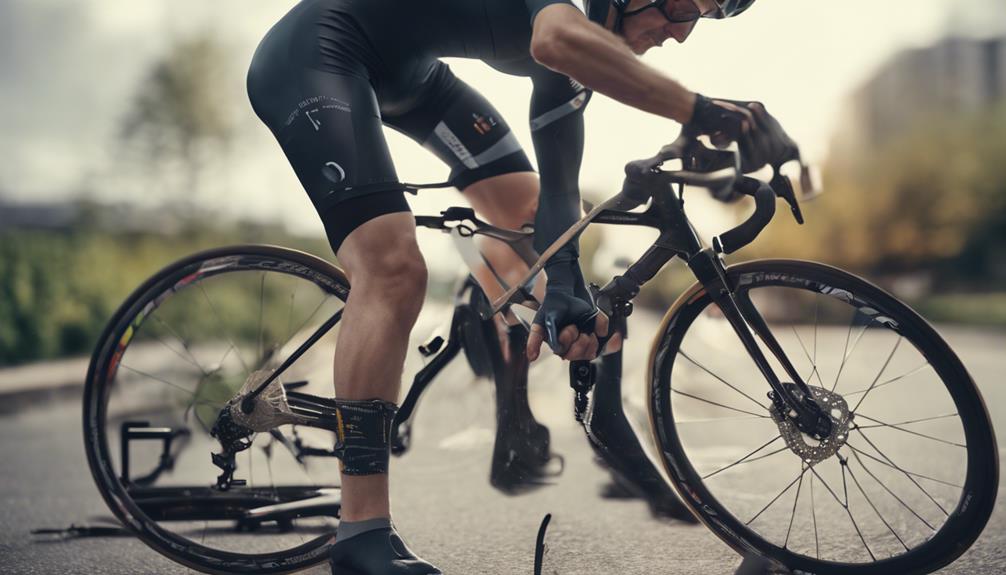When it comes to cycling uphill, the right bicycle gear can make all the difference between an enjoyable ride and an exhausting struggle. Understanding how to choose the correct gear not only enhances your cycling experience but also optimizes your performance on hilly terrains. In this article, we will delve into the different aspects of bicycle gears for uphill riding, helping you make informed decisions for your next adventure.
Understanding Bicycle Gears
Bicycle gears are designed to allow cyclists to adjust their pedaling resistance and speed. The primary function of gears is to optimize your effort based on the terrain you are riding on. When climbing hills, you want to reduce the resistance while maintaining a steady cadence. This is where understanding the gear system on your bike becomes crucial. Most bicycles come with either a derailleur system or an internal hub system, each offering different gear ratios that can affect your uphill performance.
Why Gear Selection Matters for Uphill Cycling
The importance of gear selection in uphill cycling cannot be overstated. When you encounter a steep incline, choosing the right gear allows you to maintain a consistent pedaling rhythm without over-exerting yourself. If you opt for too high a gear, you may struggle and tire quickly. Conversely, using a lower gear will enable you to pedal more efficiently, conserving your energy for longer climbs. Understanding gear ratios and how they impact your cycling can significantly enhance your uphill riding experience.
Identifying the Right Gear Ratio for Hills
Gear ratios are determined by the size of the chainrings (front gears) and the cassette (rear gears). A lower gear ratio, achieved by using smaller chainrings and larger cogs on the cassette, allows for easier pedaling uphill. For uphill climbs, look for a bike with a gear ratio that favors these lower combinations. For instance, a gear ratio of 1:1 or lower is often ideal for steep inclines, providing a good balance of power and control.
Types of Bicycle Gears for Uphill Riding
There are various types of bicycle gears designed for different cycling styles. Road bikes generally feature a compact crankset with smaller chainrings, making them suitable for climbing. Mountain bikes, on the other hand, often come with a wider range of gears, offering lower ratios for steep climbs. Hybrid bikes may have a mix, providing adequate options for both road and trail riding. Understanding the type of bike you have and its gearing system will help you choose the best setup for uphill riding.
Tips for Climbing Hills Efficiently
In addition to selecting the right gear, there are several techniques that can help you climb hills more effectively. First, maintain a steady and comfortable cadence—this is generally between 60 to 90 RPM for most cyclists. Second, shift gears smoothly before you reach an incline, allowing for a gradual transition. Lastly, focus on your body position; leaning slightly forward can help distribute your weight and maintain traction on the rear wheel. Combining these techniques with the right gear will enhance your uphill cycling performance.
Common Mistakes to Avoid When Climbing Hills
Many cyclists make mistakes that hinder their uphill performance. One common error is waiting too long to shift gears, resulting in a sudden increase in resistance that can lead to fatigue. Another mistake is overexerting oneself by pushing too hard in a higher gear. Additionally, ignoring the bike’s fit and body positioning can lead to discomfort and reduced efficiency. Being aware of these pitfalls will help you navigate hills more smoothly and enjoyably.
Conclusion: Mastering Uphill Cycling with the Right Gear
Choosing the right bicycle gear for uphill riding is essential for enhancing performance and enjoyment. By understanding gear ratios, the type of bicycle you own, and employing effective climbing techniques, you can tackle hills with confidence. Remember to stay mindful of common mistakes and continuously adjust your strategies as needed. With the right approach, you’ll find that climbing hills becomes less of a challenge and more of a rewarding aspect of your cycling journey.
Whether you’re a casual rider or a seasoned cyclist, knowing which bicycle gear is best for uphill riding will undoubtedly improve your biking experience. So gear up, head out, and conquer those hills!
